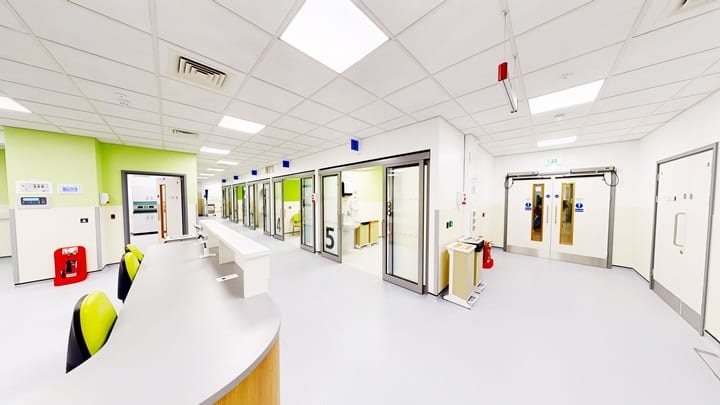
The daughter of a 70-year-old Ramsgate man who spent 29 hours on a bed in a corridor at QEQM Hospital in Margate says she was “really sad” to see so many elderly people crying out for help.
The woman, who has asked that her dad’s name is not made public, said he arrived at A&E at 10am on Saturday (April 27) and did not leave until 3pm on Sunday.
She said: “My father was suffering food poisoning and there was vomiting and diarrhoea but he had to be buzzed into wards to use the toilets and as there were no staff available that was quite difficult.
“I have never seen it before, how people were all kept on the corridors overnight. There was constant noise and people walking past and there was no hot food for people in the corridors even though they were bringing it past them for people in the wards.
“There were three corridors packed with those on beds and there were about 12 or 13 in the two corridors where we were. I’d say 95% of them were elderly and they were asking for help. The nurses were trying to help but then they would need to move forward and the person would be forgotten about. It was really sad.
“I left the hospital at 11pm and was back by 7am on Sunday and when I came in my dad was sitting in the bed and he teared up. He had tried to ask for help but the nurses just had so much going on.
“My dad is normally very tough but I had to witness him in tears because he was so vulnerable and helpless.
“The staff were overworked and obviously didn’t want to put people in corridors but it was over capacity. It was very sad, especially as many of the elderly people were there alone with no family to help them. In that way Dad was lucky because I was there to help him.”
East Kent Hospitals University Trust is responsible for hospitals including QEQM. Latest figures show that 49.7% of attendances to the Trust’s major emergency departments took longer than four hours from arrival to admission, transfer or discharge.
In March the Trust’s A&E departments at QEQM and the William Harvey Hospital in Ashford had 13,484 attendees (type 1, this excludes other departments such as Minor Injury Units) with 6787 dealt with in fewer than four hours and 6697 in four hours or more. Of these, 1131 emergency cases took 12 hours or more from decision to admit to actual admission on a ward.
‘Dedicated staff’
Sarah Hayes, chief nursing and midwifery officer, said: “I am very sorry that (the gentleman) and his daughter had concerns about his care.
“Our hospitals remain very busy, with more than 20,000 people attending our emergency departments each month, many of whom needed to be admitted. We also have people on the wards who need longer to recover to be well enough to go home, and others who are waiting for care packages and other arrangements to be finalised before it is safe for them to be discharged.
“Unfortunately this means there can be a long wait for people in our emergency departments, but our dedicated staff work incredibly hard to provide the best possible care and regularly review patients who are waiting.
“To help support our teams in caring for our sickest patients, local communities can help us by only using our emergency departments when it is an emergency, and to contact NHS 111 online to find alternative services if they have less urgent concerns.”

Last November a multi-million-pound refurbishment of the emergency department at the Queen Elizabeth The Queen Mother Hospital in Margate was completed.
Phase 3a involved rebuilding the existing resuscitation unit, where some of the most critically ill patients in the hospital are treated, providing five new state-of-the-art resuscitation bays.
Other upgrades to maximise the space included a new commercial kitchen, storage spaces, accessible toilets and clean and dirty utility areas. A new ambulance road has also been completed to provide direct access for emergency vehicles to the new emergency department entrance.
Major redevelopment of the majors and paediatric areas also took place and the final phase of work provides two additional cubicles, relatives’ room and point-of-care-testing facilities, as well as reinstating temporary areas.

